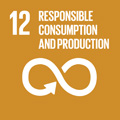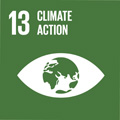- Docente: Veronica Rossi
- Credits: 6
- SSD: GEO/02
- Language: Italian
- Teaching Mode: Traditional lectures
- Campus: Bologna
- Corso: Second cycle degree programme (LM) in Geology and Territory (cod. 9073)
-
from Sep 25, 2023 to Jan 12, 2024
Learning outcomes
By the end of the course, students will be able to practically apply the acquired knowledge and skills in Quaternary Stratigraphy for a critical analysis of outcropping and buried successions by means of an integrated approach. Specifically, students will be able to reconstruct depositional-palaeoenvironmental dynamics and evaluate the main controlling factors, at different timescales (Milankovitch and sub-Milankovitch scales), by means of lithological, palaeontological and geochemical data.
Course contents
The importance of Quaternary record; stratigraphic subdivision of the Quaternary period; dating methods; oxygen isotope stratigraphy; climate variability and sea-level changes; Milankovitch and sub-Milankovitch variability; high-frequency climate and sea-level changes during the present interglacial (proxy data and current state of knowledge); integrated stratigraphic approaches and proxies (e.g., sedimentological features, ostracods and benthic foraminifers, pollen); basic concepts on depositional environments, facies and sequence stratigraphy; depositional architecture of Quaternary successions and controlling factors (case studies from the Mediterranean area); the anthropogenic forcing on depositional systems; the stratigraphic expressions of Anthropocene.
Readings/Bibliography
Lecture notes and selected scientific articles will be provided during the course. The didactic material will be deposited in the Virtuale platform at the end of the lesson.
Teaching methods
Lectures, microscope laboratory and field work.
As concerns the teaching methods of this course unit, all students must attend Module 1, 2 [https://www.unibo.it/en/services-and-opportunities/health-and-assistance/health-and-safety/online-course-on-health-and-safety-in-study-and-internship-areas] online, while Module 3 on health and safety is to be attended in class. Information about Module 3 attendance schedule is available on the website of your degree programme.
Assessment methods
Practical exam (3 open questions including stratigraphic exercises) + short oral exam (1-2 questions). Time limit for the practical exam: 2 hours. The final score will be calculated considering a weight of about 70% for the practical exam and 30% for the oral exam.
Teaching tools
LCD projector, microscopes.
Office hours
See the website of Veronica Rossi
SDGs


This teaching activity contributes to the achievement of the Sustainable Development Goals of the UN 2030 Agenda.
